|
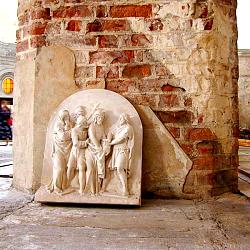
|
|
The Hill of Crosses (Kryziu kalnas)
near Siaulai is a memorial to the pain over those who gave their lives in the fight against the Russian Tsar’s
occupation in the revolution in 1863, as well as in the partisan war between 1944 and 1956. A fairly unknown war
in the middle of modern Europe. Young men who would rather fight in Lithuania's forests than betraying their country
by joining the Red Army. Alas, they were finally mowed down to the very last man. The stories of the partisans'
suffering are many and horrible. All who lost a beloved and dear friend, father or brother, has put a cross on
the hill, which now has well over a million crosses. Even the butchers have put up crosses, asking for forgiveness.
All real Lithuanians have to visit the hill and hang a cross or rosary on one of the other crosses. |
|
| |
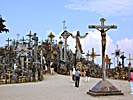 |
The Hill of Crosses, near Siaulai
The hill is softly topped, perhaps a hundred metres in diameter, with a marked path straight through, fanning
out to the hill's various sectors. The enormous amount of crosses leaves one speechless. The main path begins with
an enormous figure of Christ, and leading up to the Madonna at the top.
|
| |
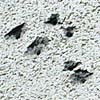 |
Failed Coup d'Etat
Bullet holes in a wall in the middle of Vilnius show how close the country was to fall back into darkness at
the putsch in 1991. What once was the front wall of the city's largest newspaper printer retains these violent
memorials, although now hidden behind advertisements.
|
| |
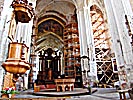 |
The Bernadine Church and Monastery
The Bernadine Church in Vilinus, neighbour to the Church of St. Anne, was not spared by the Communists. Instead
it was used for graffiti on the inside. Its interiors were completely broken up, but it is presently being renovated.
|
| |
 |
The Church of Virgin Mary and the Franciscan Monastery
Horrendous scenes must have revealed themselves to the renovators coming to get to grips with the Church of
Virgin Mary in Vilnius, considering the amount of human bones found. The church is now being restored. Despite
this, or thanks to it, it is well worth a visit.
|
| |
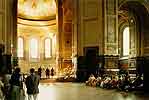 |
Other Desecrated Churches
The Soviets banned all religious practice and used the churches for other things. We happened to “come by” a
wedding in a church in Kaunas in 1992. As you can see from the picture, the church has not been restored and it
is evident that the Red Army had used it for target practice.
|
|
|